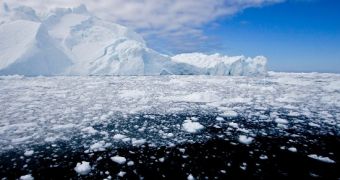Since 2005 until present day, the Earth's geographic North Pole has been steadily shifting towards the east. By the looks of it, the shift is one of several centimeters per year.
Although it is very much true that the Earth's geographic poles are not exactly fixed points and that they change their location as the years go by, several specialists warn that things have taken a turn for the worse starting with 2005.
Nature informs us that, between 1982–2005, the North Pole moved towards Labrador, Canada by about 2 milliarcseconds per year.
Its drifting pattern was drastically altered in 2005, when it started making its way towards Greenland and covering as much as 7 milliarcseconds on a yearly basis.
As far as the researchers can tell, climate change and global warming are the two phenomena that should be blamed for the North Pole's drifting towards Greenland at said worrying rate.
More precisely, they suspect that it was the increased ice loss in both Greenland and in other parts of the world that caused this shift to occur.
In order to reach these conclusions, the University of Texas, Austin researchers analyzed data collected by NASA. The data referred to more or less recent changes that had taken place in the planet's gravity field.
This allowed them to piece together scenarios explaining how the Earth's mass distribution is being affected by the new global ice loss patterns.
In the end, the scientists concluded that increased global warming-related ice loss is the one to blame for over 90% of the polar shift that has taken place starting with the year 2005.
Although ice loss all across the world has contributed to said changes in the North Pole's location, it appears that the increased melting of Greenland’s ice sheet carries most of the blame.
A detailed account of this investigation and its findings is made available to the public in the scientific journal Geophysical Research Letters.

 14 DAY TRIAL //
14 DAY TRIAL //